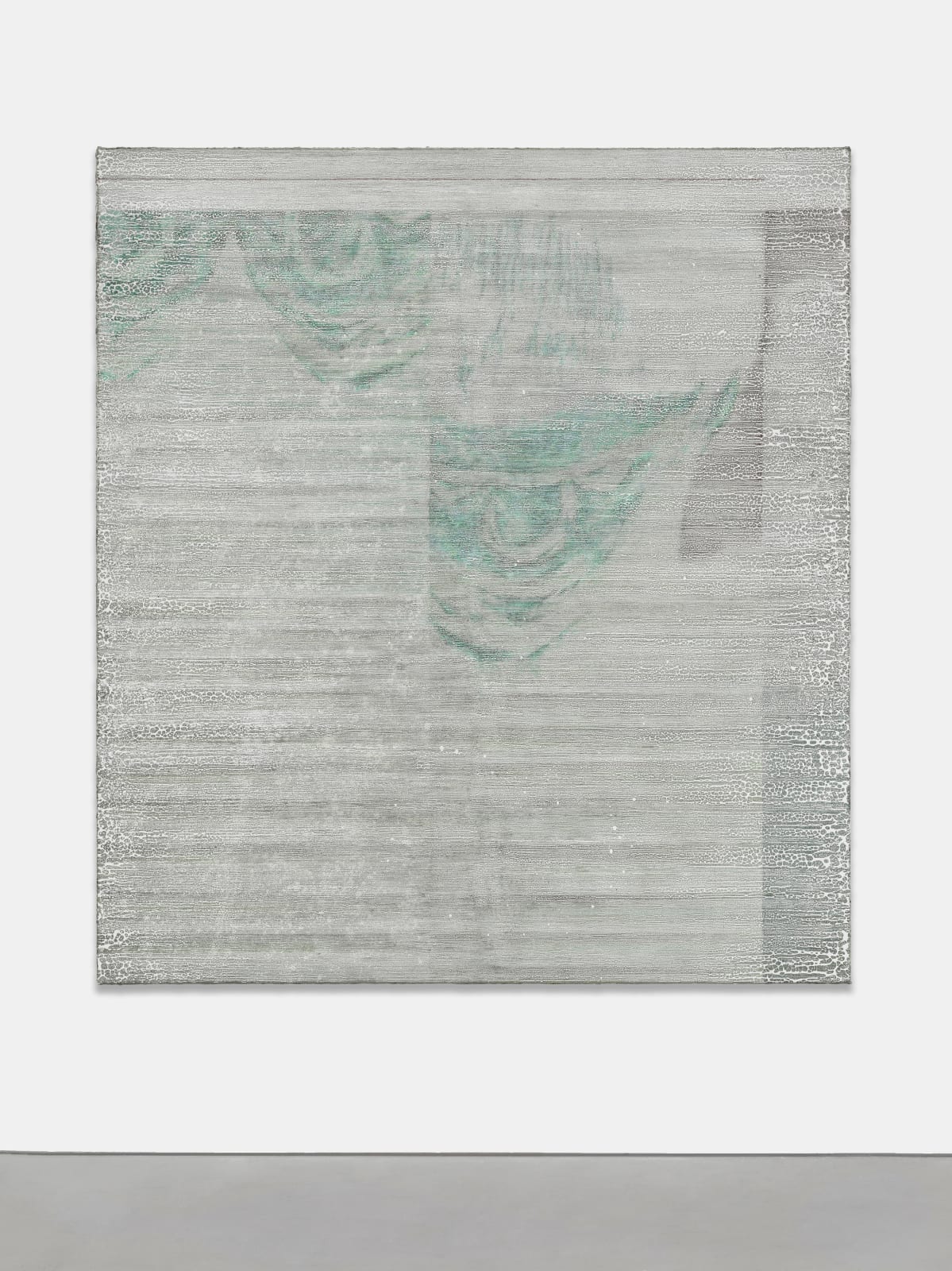Brett Ginsburg
Inheritable Edits: Multiplier; Study from Dumas: The Human Tripod, 2025
acrylic on canvas
201 x 181 x 2.5 cm
79 1/4 x 71 1/4 x 1 in
unique
79 1/4 x 71 1/4 x 1 in
unique
“This painting pictorially contains an enlarged remnant scan captured after 'Multiplier; Study from Dumas: The Human Tripod, no. 1,' 2023 — a kind of glitch, afterimage, or derivative. It feels...
“This painting pictorially contains an enlarged remnant scan captured after 'Multiplier; Study from Dumas: The Human Tripod, no. 1,' 2023 — a kind of glitch, afterimage, or derivative. It feels as if the ghost of another work is nested within a new one.
Its palette appears inverted through the use of low-chroma blues, greens, and reds that verge on gray, yet they illuminate actively in natural light. These colors and pictorial elements are too subtle to be read on screen, but they reveal themselves in person.
The painting explores interior artifacts produced and then buried through my painting process from the reverse side of glass. The applied layers disorient and veil one another, complicating the recto-verso — an attempt to reiterate moments of process within the finalized work. Like verglas, a thin layer of ice rounding natural forms, the painting creates a lens.
Dumas once considered the tripod a form, not a figure. I’m drawn to this humanoid ambiguity and the psychological charge of such a postured gaze — a kind of reflection back onto ourselves. A friend once remarked on this tactic within cinematic cuts; for me, this work connects the exhibition’s spectrum, forming relational threads rather than direct routes.”
-Brett Ginsburg
Its palette appears inverted through the use of low-chroma blues, greens, and reds that verge on gray, yet they illuminate actively in natural light. These colors and pictorial elements are too subtle to be read on screen, but they reveal themselves in person.
The painting explores interior artifacts produced and then buried through my painting process from the reverse side of glass. The applied layers disorient and veil one another, complicating the recto-verso — an attempt to reiterate moments of process within the finalized work. Like verglas, a thin layer of ice rounding natural forms, the painting creates a lens.
Dumas once considered the tripod a form, not a figure. I’m drawn to this humanoid ambiguity and the psychological charge of such a postured gaze — a kind of reflection back onto ourselves. A friend once remarked on this tactic within cinematic cuts; for me, this work connects the exhibition’s spectrum, forming relational threads rather than direct routes.”
-Brett Ginsburg




